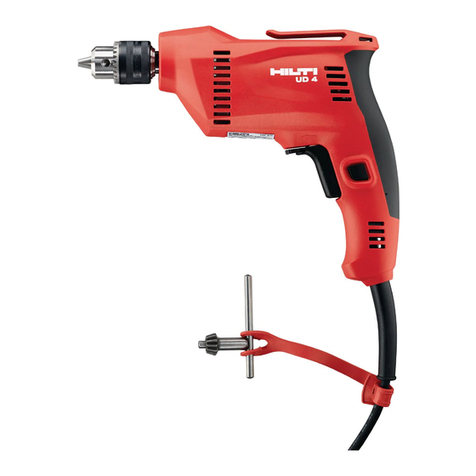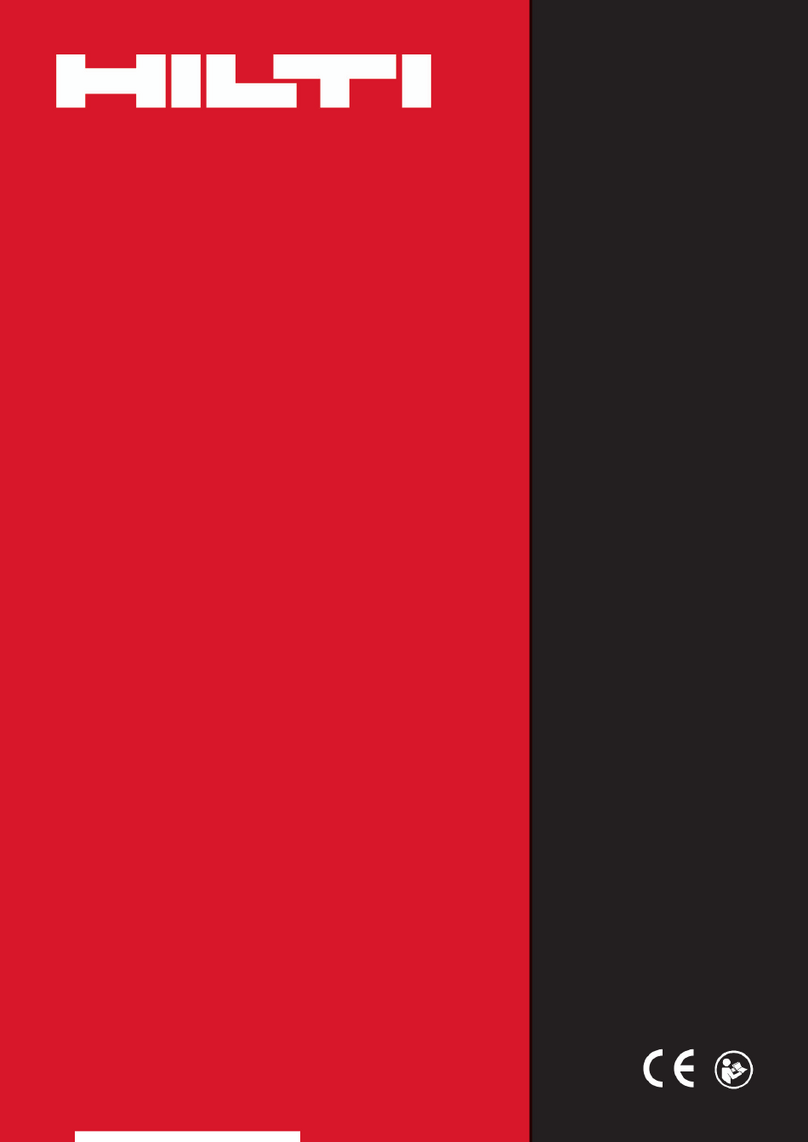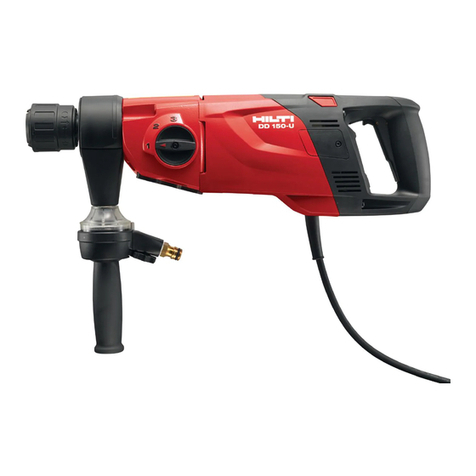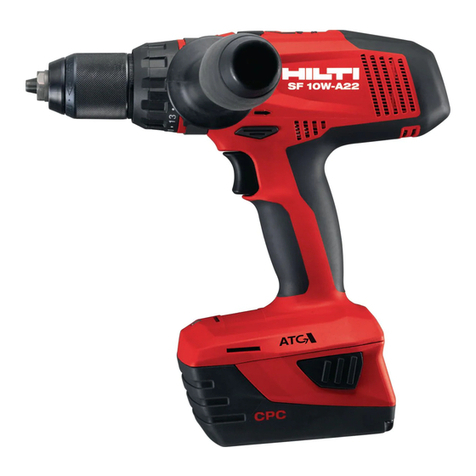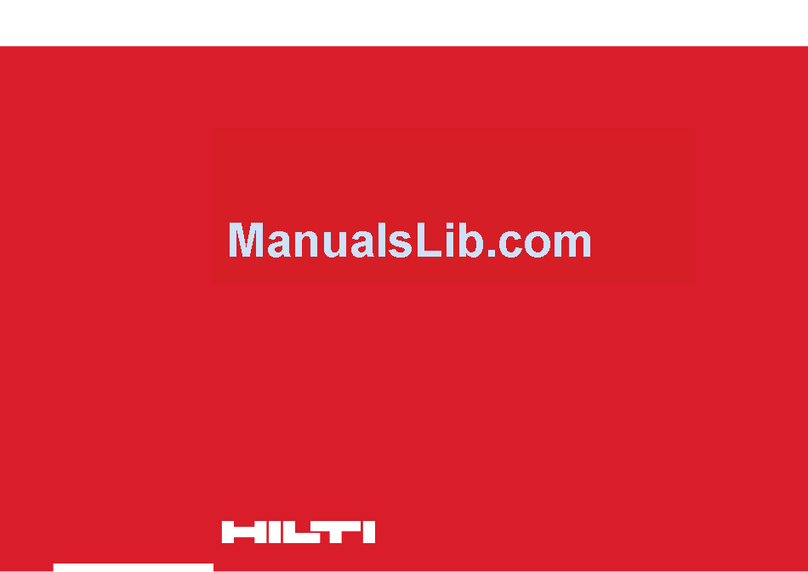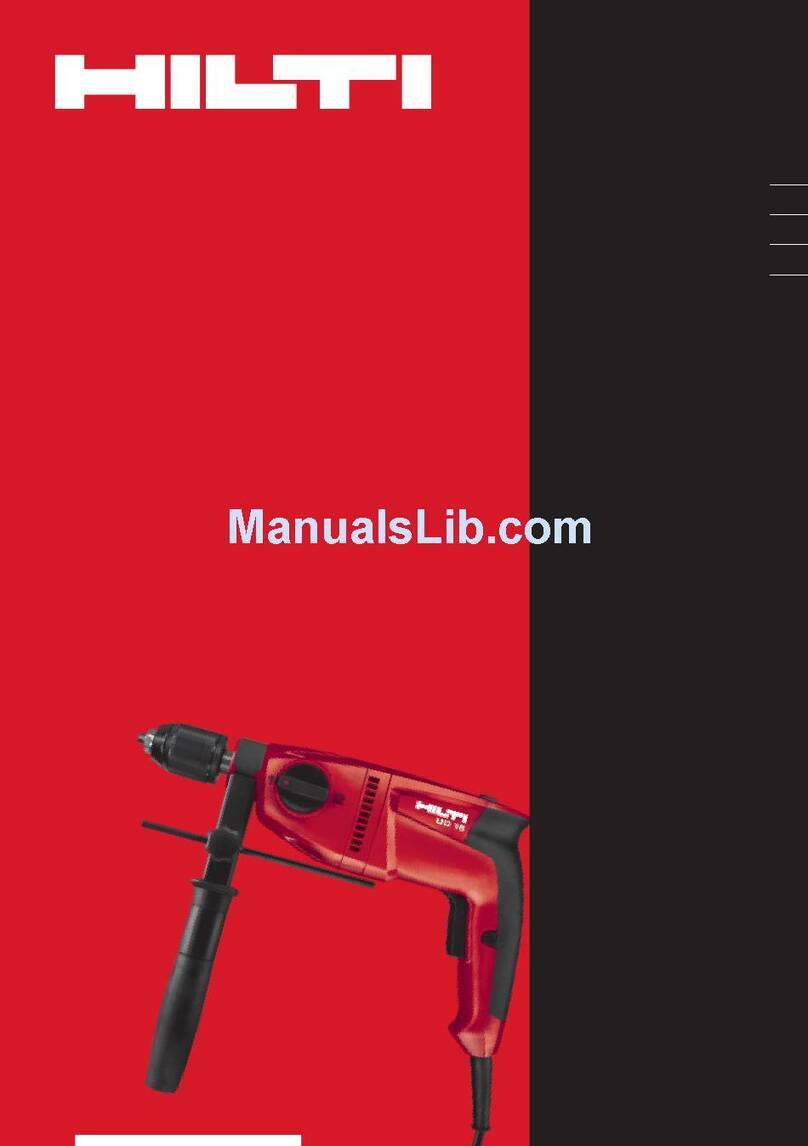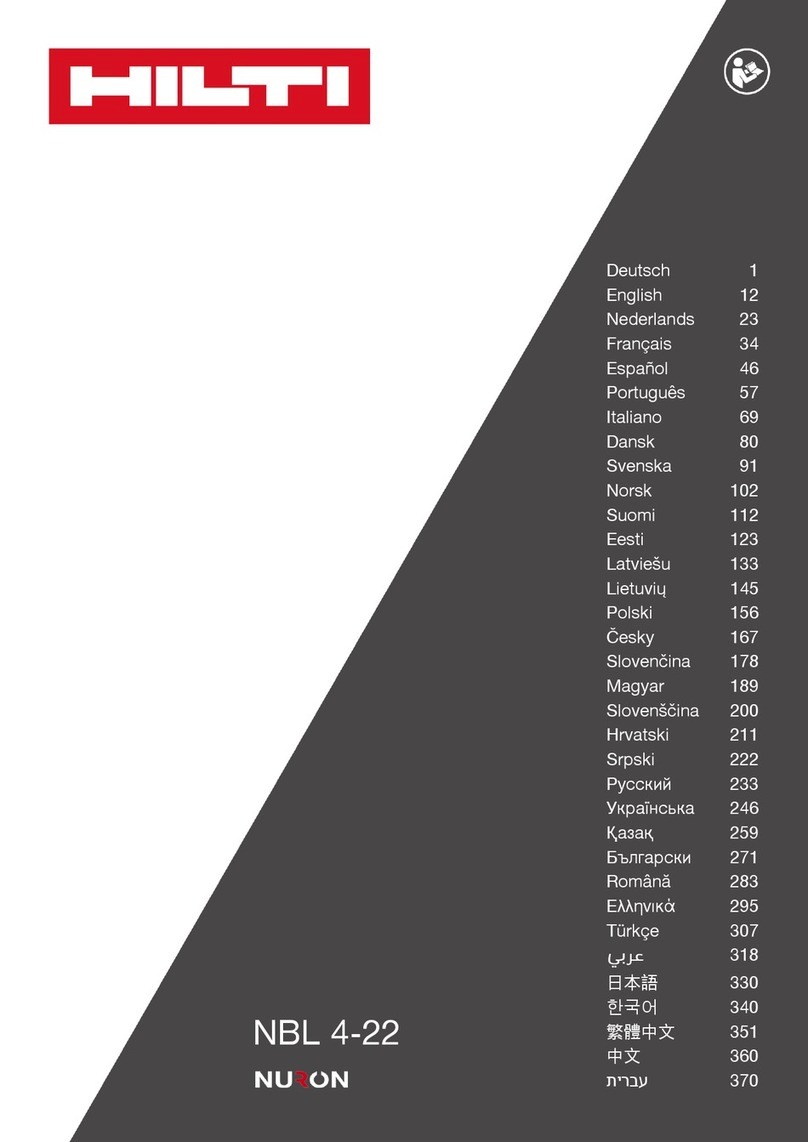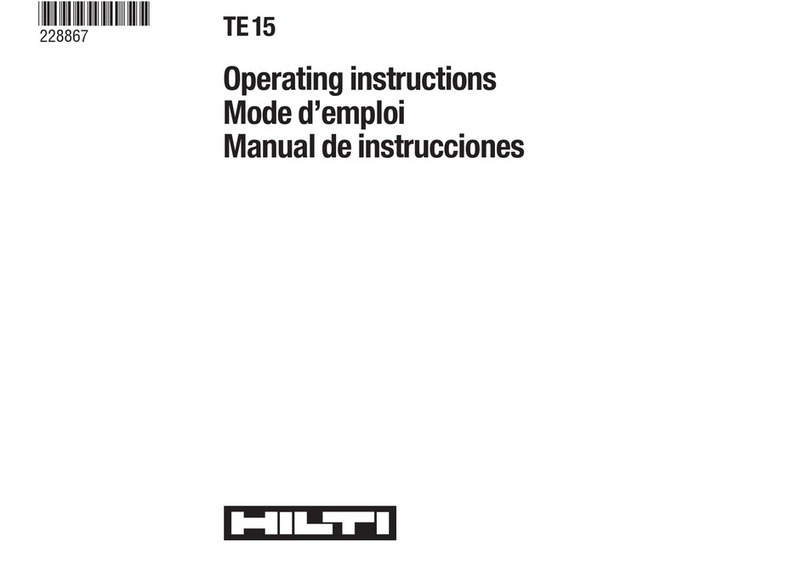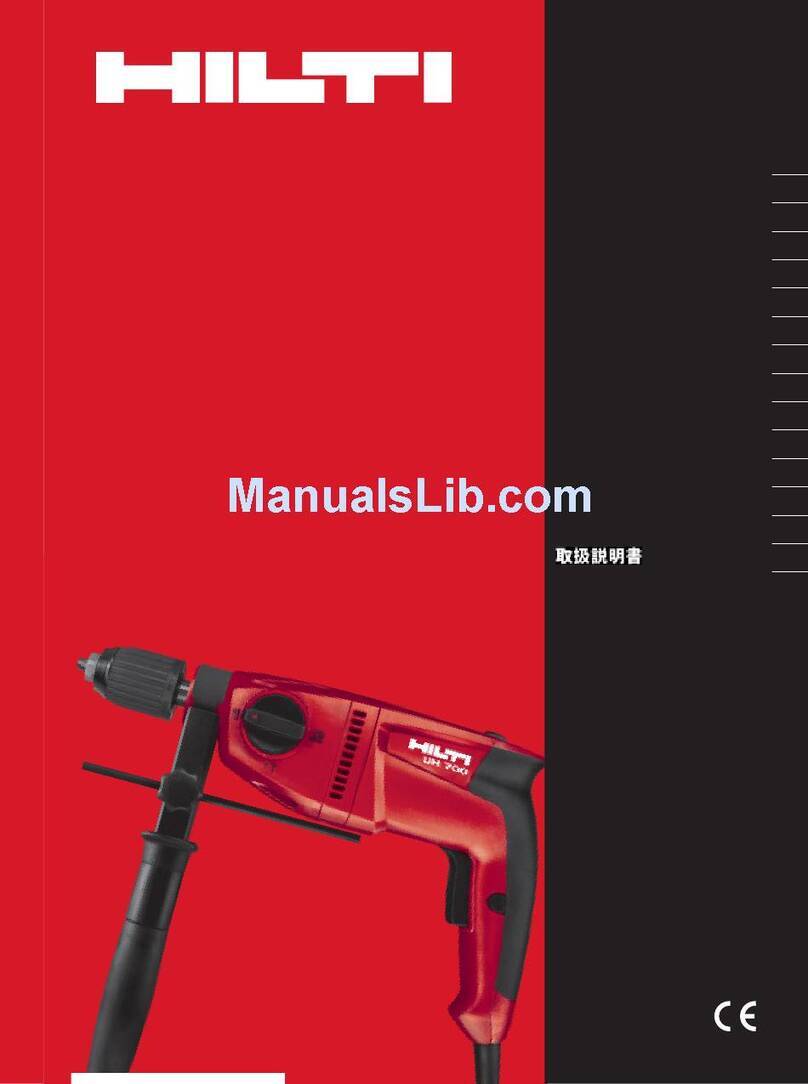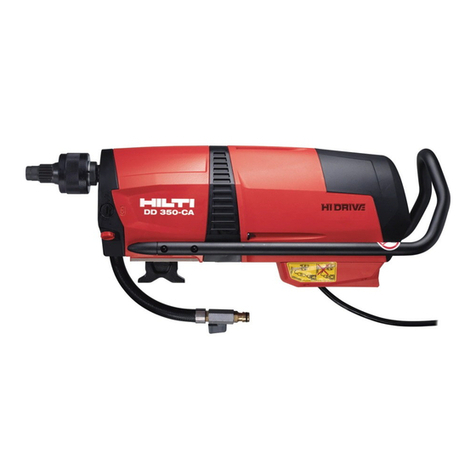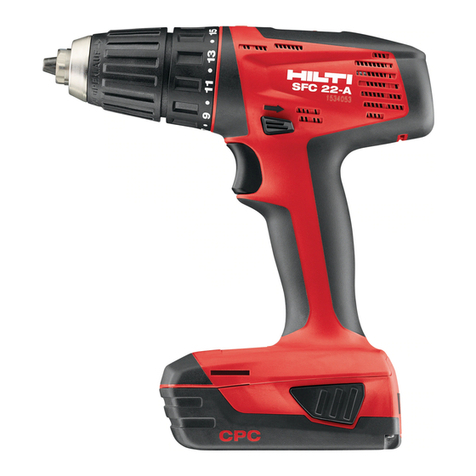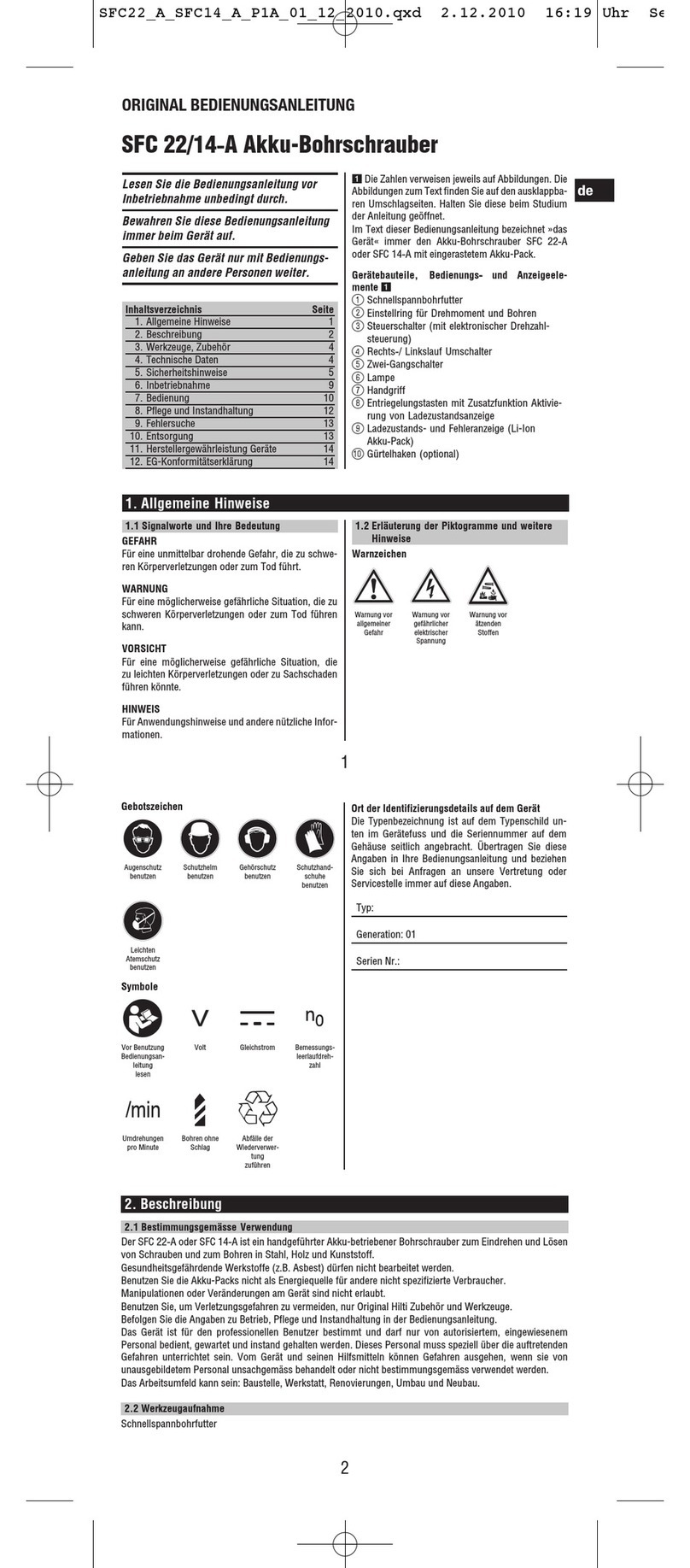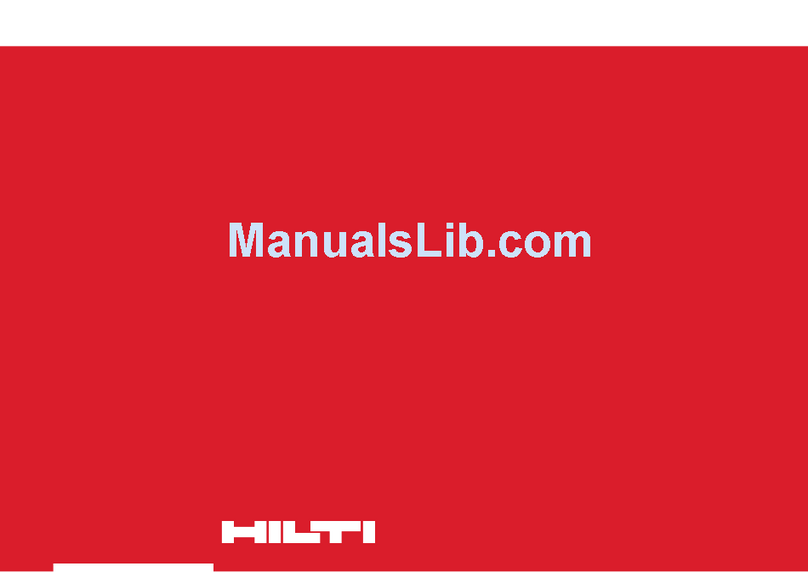
not use a power tool while you are tired or under
the influence of drugs, alcohol or medication. A
moment of inattention while operating power tools
may result in serious personal injury.
b) Use personal protective equipment. Always wear
eye protection. Protective equipment such as dust
mask, non-skid safety shoes, hard hat, or hearing
protection used for appropriate conditions will reduce
personal injuries.
c) Prevent unintentional starting. Ensure the switch
is in the off‐position before connecting to power
source and/or battery pack, picking up or carrying
the tool. Carrying power tools with your finger on the
switch or energising power tools that have the switch
on invites accidents.
d) Remove any adjusting key or wrench before turn-
ing the power tool on. Awrenchorakeyleftat-
tached to a rotating part of the power tool may result
in personal injury.
e) Do not overreach. Keep proper footing and bal-
ance at all times. This enables better control of the
power tool in unexpected situations.
f) Dress properly. Do not wear loose clothing or
jewellery. Keep your hair, clothing and gloves
away from moving parts. Loose clothes, jewellery
or long hair can be caught in moving parts.
g) If devices are provided for the connection of dust
extraction and collection facilities, ensure these
are connected and properly used. Use of dust
collection can reduce dust-related hazards.
4.1.4 Power tool use and care
a) Do not force the power tool. Use the correct
power tool for your application. The correct power
tool will do the job better and safer at the rate for
which it was designed.
b) Do not use the power tool if the switch does not
turn it on and off. Any power tool that cannot be
controlled with the switch is dangerous and must be
repaired.
c) Disconnect the plug from the power source
and/or the battery pack from the power tool
before making any adjustments, changing
accessories, or storing power tools. Such
preventive safety measures reduce the risk of
starting the power tool accidentally.
d) Store idle power tools out of the reach of chil-
dren and do not allow persons unfamiliar with the
power tool or these instructions to operate the
power tool. Power tools are dangerous in the hands
of untrained users.
e) Maintain power tools. Check for misalignment or
binding of moving parts, breakage of parts and
any other condition that may affect the power
tool’s operation. If damaged, have the power tool
repaired before use. Many accidents are caused by
poorly maintained power tools.
f) Keep cutting tools sharp and clean. Properly main-
tained cutting tools with sharp cutting edges are less
likely to bind and are easier to control.
g) Use the power tool, accessories and tool bits etc.
in accordance with these instructions, taking into
account the working conditions and the work to
be performed. Use of the power tool for opera-
tions different from those intended could result in a
hazardous situation.
4.1.5 Service
a) Have your power tool serviced by a qualified repair
person using only identical replacement parts.
This will ensure that the safety of the power tool is
maintained.
4.2 Proper organization of the workplace
a) Approval must be obtained from the site engineer
or architect prior to beginning drilling work. Drilling
work on buildings and other structures may influence
the statics of the structure, especially when steel
reinforcing bars or load-bearing components are cut
through.
b) When drilling through walls, cover the area behind
the wall, as material or the core may fall out on the
other side of the wall. When drilling in a downward
direction, cordon off or cover the area below as
drilled material or the core may drop out and fall
down.
c) Wear respiratory protection if the work causes
dust.
d) It is recommended that rubber gloves and non-
skid shoes are worn when working outdoors.
e) Keep the supply cord, extension cord, suction
hose and vacuum hose away from rotating parts.
f) Do not work from a ladder.
4.2.1 General safety measures
a) Tampering with or modification of the drilling feed
unit, drill stand and accessories is strictly prohibited.
b) Keep the grips dry, clean and free from oil and
grease.
c) Never leave the appliance unattended.
d) Store appliances in a secure place when not in
use.When not in use, appliances must be stored in
a dry, high place or locked away out of reach of
children.
e) Children must be instructed not to play with the
appliance.
f) This appliance is not intended for use by per-
sons (including children) with reduced physical,
sensory or mental capabilities, or lack of experi-
ence and knowledge, unless they have been given
supervision or instruction concerning use of the
appliance by a person responsible for their safety.
g) Check the appliance and its accessories for any
damage. Guards, safety devices and any slightly
damaged parts must be checked carefully to en-
sure that they function faultlessly and as intended.
Check that moving parts function correctly with-
out sticking and that no parts are damaged. All
parts must be fitted correctly and fulfill all condi-
tions necessary for correct operation of the appli-
ance. Damaged guards, safety devices and other
parts must be repaired or replaced properly at an
en
5
Printed: 15.10.2015 | Doc-Nr: PUB / 5236038 / 000 / 01

